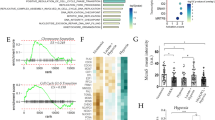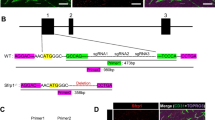Abstract
Glioblastoma (GBM) is the most frequent brain cancer and more lethal than other cancers. Characteristics of this cancer are its high drug resistance, high recurrence rate and invasiveness. Invasiveness in GBM is related to overexpression of matrix metalloproteinases (MMPs) which are mediated by wnt/β-catenin and induced by the activation of signaling pathways extracellularly activated by the cytokine neuroleukin (NLK) in cancer stem cells (CSC). Therefore, in this work we evaluated the effect of the tetrose saccharide, erythrose (Ery), a NLK inhibitor of invasiveness and drug sensitization in glioblastoma stem cells (GSC). GSC were obtained from parental U373 cell line by a CSC phenotype enrichment protocol based on microenvironmental stress conditions such as hypoxia, hipoglycemia, drug exposition and serum starvation. Enriched fraction of GSC overexpressed the typical markers of brain CSC: low CD133+ and high CD44; in addition, epithelial to mesenchyme transition (EMT) markers and MMPs were increased several times in GSC vs. U373 correlating with higher invasiveness, elongated and tubular mitochondrion and temozolomide (TMZ) resistance. IC50 of Ery was found at nM concentration and at 24 h induced a severe diminution of EMT markers, MMPs and invasiveness in GSC. Furthermore, the phosphorylation pattern of NLK after Ery exposition also was affected. In addition, when Ery was administered to GSC at subIC50, it was capable of reverting TMZ resistance at concentrations innocuous to non-tumor cancer cells. Moreover, Ery added daily induced the death of all GSC. Those findings indicated that the phytodrug Ery could be used as adjuvant therapy in GBM.






Similar content being viewed by others
Data availability
The datasets generated during and/or analyzed during the current study are available from the corresponding author on reasonable request.
Abbreviations
- CSC:
-
Cancer stem cells
- GBM:
-
Glioblastoma
- GSC:
-
Glioblastoma cancer stem cells
- E4P:
-
Erythrose 4-phosphate
- EMT:
-
Epithelial-mesenchyme transition
- Ery:
-
Erythrose
- HPI/AMF:
-
Hexose phosphate isomerase/autocrine motility factor
- IC50 :
-
Drug concentration required to inhibit 50% of cellular viability
- MMPs:
-
Matrix metalloproteinases
- NLK:
-
Neuroleukin
- P-Ser:
-
Phosphor-serine
- P-Thr:
-
Phosphor-threonine
- TMZ:
-
Temozolomide
References
Lin D, Wang M, Chen Y, Gong J, Chen L, Shi X, Lan F, Chen Z, Xiong T, Sun H, Wan S. Trends in intracranial glioma incidence and mortality in the United States, 1975–2018. Front Oncol. 2021;11:748061. https://doi.org/10.3389/fonc.2021.748061.
Back MF, Ang EL, Ng WH, See SJ, Lim CC, Chan SP, Yeo TT. Improved median survival for glioblastoma multiforme following introduction of adjuvant temozolomide chemotherapy. Ann Acad Med Singap. 2007;36(5):338–42.
Virga J, Szivos L, Hortobágyi T, Chalsaraei MK, Zahuczky G, Steiner L, Tóth J, Reményi-Puskár J, Bognár L, Klekner A. Extracellular matrix differences in glioblastoma patients with different prognoses. Oncol Lett. 2017;17(1):797–806. https://doi.org/10.3892/ol.2018.9649.
Rong L, Li N, Zhang Z. Emerging therapies for glioblastoma: current state and future directions. J Exp Clin Cancer Res. 2022;41(1):142. https://doi.org/10.1186/s13046-022-02349-7.
Arora A, Somasundaram K. Glioblastoma vs temozolomide: can the red queen race be won? Cancer Biol Ther. 2019;20(8):1083–90. https://doi.org/10.1080/15384047.2019.1599662.
Stupp R, Hegi ME, Mason WP, van den Bent MJ, Taphoorn MJ, Janzer RC, Ludwin SK, Allgeier A, Fisher B, Belanger K, Hau P, Brandes AA, Gijtenbeek J, Marosi C, Vecht CJ, Mokhtari K, Wesseling P, Villa S, Eisenhauer E, Gorlia T, Weller M, Lacombe D, Cairncross JG, Mirimanoff RO, European Organisation for Research and Treatment of Cancer Brain Tumour and Radiation Oncology Groups; National Cancer Institute of Canada Clinical Trials Group. Effects of radiotherapy with concomitant and adjuvant temozolomide versus radiotherapy alone on survival in glioblastoma in a randomised phase III study: 5-year analysis of the EORTC-NCIC trial. Lancet Oncol. 2009;10(5):459–66. https://doi.org/10.1016/S1470-2045(09)70025-7.
Lathia JD, Mack SC, Mulkearns-Hubert EE, Valentim CL, Rich JN. Cancer stem cells in glioblastoma. Genes Dev. 2015;29(12):1203–17. https://doi.org/10.1101/gad.261982.115.
Alfonso J, Talkenberger K, Seifert M, Klink B, Hawkins-Daarud A, Swanson KR, Hatzikirou H, Deutsch A. The biology and mathematical modelling of glioma invasion: a review. J R Soc Interface. 2017;14(136):20170490. https://doi.org/10.1098/rsif.2017.0490.
Inoue A, Takahashi H, Harada H, Kohno S, Ohue S, Kobayashi K, Yano H, Tanaka J, Ohnishi T. Cancer stem-like cells of glioblastoma characteristically express MMP-13 and display highly invasive activity. Int J Oncol. 2010;37(5):1121–31. https://doi.org/10.3892/ijo_00000764.
Gonzalez-Avila G, Sommer B, Mendoza-Posada DA, Ramos C, Garcia-Hernandez AA, Falfan-Valencia R. Matrix metalloproteinases participation in the metastatic process and their diagnostic and therapeutic applications in cancer. Crit Rev Oncol Hematol. 2019;137:57–83. https://doi.org/10.1016/j.critrevonc.2019.02.010.
Hagemann C, Anacker J, Ernestus RI, Vince GH. A complete compilation of matrix metalloproteinase expression in human malignant gliomas. World J Clin Oncol. 2012;3(5):67–79. https://doi.org/10.5306/wjco.v3.i5.67.
Abdel-Hamid NM, Abass SA. Matrix metalloproteinase contribution in management of cancer proliferation, metastasis and drug targeting. Mol Biol Rep. 2021;48(9):6525–38. https://doi.org/10.1007/s11033-021-06635-z.
Liang W, Chen Y, Li X, Guo F, Sun J, Zhang X, Xu B, Gao W. Label-free proteomic analysis of smoke-drying and shade-drying processes of postharvest rhubarb: a comparative study. Front Plant Sci. 2021;12:663180. https://doi.org/10.3389/fpls.2021.663180.
Niinaka Y, Paku S, Haga A, Watanabe H, Raz A. Expression and secretion of neuroleukin/phosphohexose isomerase/maturation factor as autocrine motility factor by tumor cells. Cancer Res. 1998;58(12):2667–74.
Watanabe H, Carmi P, Hogan V, Raz T, Silletti S, Nabi IR, Raz A. Purification of human tumor cell autocrine motility factor and molecular cloning of its receptor. J Biol Chem. 1991;266(20):13442–8.
Kathagen-Buhmann A, Maire CL, Weller J, Schulte A, Matschke J, Holz M, Ligon KL, Glatzel M, Westphal M, Lamszus K. The secreted glycolytic enzyme GPI/AMF stimulates glioblastoma cell migration and invasion in an autocrine fashion but can have anti-proliferative effects. Neuro Oncol. 2018;20(12):1594–605. https://doi.org/10.1093/neuonc/noy117.
Gallardo-Pérez JC, Adán-Ladrón de Guevara A, Marín-Hernández A, Moreno-Sánchez R, Rodríguez-Enríquez S. HPI/AMF inhibition halts the development of the aggressive phenotype of breast cancer stem cells. Biochim Biophys Acta Mol Cell Res. 2017;1864(10):1679–90. https://doi.org/10.1016/j.bbamcr.2017.06.015.
Manuel Iglesias J, Beloqui I, Garcia-Garcia F, Leis O, Vazquez-Martin A, Eguiara A, Cufi S, Pavon A, Menendez JA, Dopazo J, Martin AG. Mammosphere formation in breast carcinoma cell lines depends upon expression of E-cadherin. PLoS ONE. 2013;8(10):e77281. https://doi.org/10.1371/journal.pone.0077281.
Gallardo-Pérez JC, Rivero-Segura NA, Marín-Hernández A, Moreno-Sánchez R, Rodríguez-Enríquez S. GPI/AMF inhibition blocks the development of the metastatic phenotype of mature multi-cellular tumor spheroids. Biochim Biophys Acta. 2014;1843(6):1043–53. https://doi.org/10.1016/j.bbamcr.2014.01.013.
Jiménez-García LF, Segura-Valdez ML. Visualizing nuclear structure in situ by atomic force microscopy. Methods Mol Biol. 2004;242:191–9. https://doi.org/10.1385/1-59259-647-9:191.
Zhao J, Zhang J, Yu M, Xie Y, Huang Y, Wolff DW, Abel PW, Tu Y. Mitochondrial dynamics regulates migration and invasion of breast cancer cells. Oncogene. 2013;32(40):4814–24. https://doi.org/10.1038/onc.2012.494.
Liu LL, Yi T, Zhao X. Antitumor effect of d-erythrose in an abdominal metastatic model of colon carcinoma. Oncol Lett. 2015;9(2):769–73. https://doi.org/10.3892/ol.2014.2764.
Pandey V, Ranjan N, Narne P, Babu PP. Roscovitine effectively enhances antitumor activity of temozolomide in vitro and in vivo mediated by increased autophagy and Caspase-3 dependent apoptosis. Sci Rep. 2019;9(1):5012. https://doi.org/10.1038/s41598-019-41380-1.
Oliver L, Lalier L, Salaud C, Heymann D, Cartron PF, Vallette FM. Drug resistance in glioblastoma: are persisters the key to therapy? Cancer Drug Resist. 2020;3(3):287–301. https://doi.org/10.20517/cdr.2020.29.
Stylli SS. Novel treatment strategies for glioblastoma-a summary. Cancers (Basel). 2021;13(22):5868. https://doi.org/10.3390/cancers13225868.
Yusuf S, Aretz P, Nickel AC, Westhoff P, Sharma A, Qin N, Remke M, Steiger HJ, Hänggi D, Liu H, Liu H, Neumann S, Reifenberger G, Maciaczyk J. WNT/β-catenin-mediated resistance to glucose deprivation in glioblastoma stem-like cells. Cancers. 2022;14(13):3165. https://doi.org/10.3390/cancers14133165.
Vyas S, Zaganjor E, Haigis MC. Mitochondria and cancer. Cell. 2016;166(3):555–66. https://doi.org/10.1016/j.cell.2016.07.002.
Gallardo-Pérez JC, de Guevara AA, García-Amezcua MA, Robledo-Cadena DX, Pacheco-Velázquez SC, Belmont-Díaz JA, Vargas-Navarro JL, Moreno-Sánchez R, Rodríguez-Enríquez S. Celecoxib and dimethylcelecoxib block oxidative phosphorylation, epithelial–mesenchymal transition and invasiveness in breast cancer stem cells. Curr Med Chem. 2022;29(15):2719–35. https://doi.org/10.2174/0929867328666211005124015.
Bordi M, Nazio F, Campello S. The close interconnection between mitochondrial dynamics and mitophagy in cancer. Front Oncol. 2017;7:81. https://doi.org/10.3389/fonc.2017.00081.
Wang S, Shi X, Wei S, Ma D, Oyinlade O, Lv SQ, Ying M, Zhang YA, Claypool SM, Watkins P, Xia S. Krüppel-like factor 4 (KLF4) induces mitochondrial fusion and increases spare respiratory capacity of human glioblastoma cells. J Biol Chem. 2018;293(17):6544–55. https://doi.org/10.1074/jbc.RA117.001323.
López de Andrés J, Griñán-Lisón C, Jiménez G, Marchal JA. Cancer stem cell secretome in the tumor microenvironment: a key point for an effective personalized cancer treatment. J Hematol Oncol. 2020;13(1):136. https://doi.org/10.1186/s13045-020-00966-3.
Li Y, Wei Z, Dong B, Lian Z, Xu Y. Silencing of phosphoglucose isomerase/autocrine motility factor decreases U87 human glioblastoma cell migration. Int J Mol Med. 2016;37(4):998–1004. https://doi.org/10.3892/ijmm.2016.2500.
Funasaka T, Yanagawa T, Hogan V, Raz A. Regulation of phosphoglucose isomerase/autocrine motility factor expression by hypoxia. FASEB J. 2005;19(11):1422–30. https://doi.org/10.1096/fj.05-3699com.
Kho DH, Zhang T, Balan V, Wang Y, Ha SW, Xie Y, Raz A. Autocrine motility factor modulates EGF-mediated invasion signaling. Can Res. 2014;74(8):2229–37. https://doi.org/10.1158/0008-5472.CAN-13-2937.
Haga A, Niinaka Y, Raz A. Phosphohexose isomerase/autocrine motility factor/neuroleukin/maturation factor is a multifunctional phosphoprotein. Biochim Biophys Acta. 2000;1480(1–2):235–44. https://doi.org/10.1016/s0167-4838(00)00075-3.
Funasaka T, Hogan V, Raz A. Phosphoglucose isomerase/autocrine motility factor mediates epithelial and mesenchymal phenotype conversions in breast cancer. Can Res. 2009;69(13):5349–56. https://doi.org/10.1158/0008-5472.CAN-09-0488.
Wen PY, Weller M, Lee EQ, Alexander BM, Barnholtz-Sloan JS, Barthel FP, Batchelor TT, Bindra RS, Chang SM, Chiocca EA, Cloughesy TF, DeGroot JF, Galanis E, Gilbert MR, Hegi ME, Horbinski C, Huang RY, Lassman AB, Le Rhun E, Lim M, van den Bent MJ. Glioblastoma in adults: a Society for Neuro-Oncology (SNO) and European Society of Neuro-Oncology (EANO) consensus review on current management and future directions. Neuro Oncol. 2020;22(8):1073–113. https://doi.org/10.1093/neuonc/noaa106.
Park HS, Jeoung NH. Autocrine motility factor secreted by HeLa cells inhibits the growth of many cancer cells by regulating AKT/ERK signaling. Biochem Biophys Res Commun. 2020;525(3):557–62. https://doi.org/10.1016/j.bbrc.2020.02.135.
Yang Y, Lian S, Meng L, Qu L, Shou C. Antibody array revealed PRL-3 affects protein phosphorylation and cytokine secretion. PLoS ONE. 2017;12(1):e0169665. https://doi.org/10.1371/journal.pone.0169665.
Romagnoli A, Oliverio S, Evangelisti C, Iannicola C, Ippolito G, Piacentini M. Neuroleukin inhibition sensitises neuronal cells to caspase-dependent apoptosis. Biochem Biophys Res Commun. 2003;302(3):448–53. https://doi.org/10.1016/s0006-291x(03)00188-8.
Liudvytska O, Kolodziejczyk-Czepas J. A review on rhubarb-derived substances as modulators of cardiovascular risk factors-a special emphasis on anti-obesity action. Nutrients. 2022;14(10):2053. https://doi.org/10.3390/nu14102053.
Talukder AH, Bagheri-Yarmand R, Williams RR, Ragoussis J, Kumar R, Raz A. Antihuman epidermal growth factor receptor 2 antibody herceptin inhibits autocrine motility factor (AMF) expression and potentiates antitumor effects of AMF inhibitors. Clin Cancer Res. 2002;8(10):3285–9. https://doi.org/10.1074/jbc.ra117.001323.
Talukder AH, Adam L, Raz A, Kumar R. Heregulin regulation of autocrine motility factor expression in human tumor cells. Cancer Res. 2000;60(2):474–80.
Haga A, Funasaka T, Niinaka Y, Raz A, Nagase H. Autocrine motility factor signaling induces tumor apoptotic resistance by regulations Apaf-1 and Caspase-9 apoptosome expression. Int J Cancer. 2003;107(5):707–14. https://doi.org/10.1002/ijc.11449.
Trejo-Solís C, Serrano-Garcia N, Escamilla-Ramírez Á, Castillo-Rodríguez RA, Jimenez-Farfan D, Palencia G, Calvillo M, Alvarez-Lemus MA, Flores-Nájera A, Cruz-Salgado A, Sotelo J. Autophagic and apoptotic pathways as targets for chemotherapy in glioblastoma. Int J Mol Sci. 2018;19(12):3773. https://doi.org/10.3390/ijms19123773.
Acknowledgements
The present work was partially supported by grants from CONACyT-México (No. 243249 to JCGP). Authors want to thanks to students Monserrat Vazquez-Bautista, Erika Montserrat Navarro-Araujo and Andrea Torrero-Díaz for their technical assistance.
Funding
The present work was partially supported by Grants from CONACyT-México (No. 243249 to JCGP).
Author information
Authors and Affiliations
Contributions
All authors contributed to the study conception and design. Material preparation, data collection and analysis were performed by [JCGP], [MCTS], [LTAM], [RLM], [LFJG] and [DXRC]. The first draft of the manuscript was written by [JCGP] and all authors commented on previous versions of the manuscript. All authors read and approved the final manuscript.
Corresponding author
Ethics declarations
Competing interests
The authors have no relevant financial or non-financial interests to disclose.
Additional information
Publisher's Note
Springer Nature remains neutral with regard to jurisdictional claims in published maps and institutional affiliations.
Rights and permissions
Springer Nature or its licensor (e.g. a society or other partner) holds exclusive rights to this article under a publishing agreement with the author(s) or other rightsholder(s); author self-archiving of the accepted manuscript version of this article is solely governed by the terms of such publishing agreement and applicable law.
About this article
Cite this article
Gallardo-Pérez, J.C., Trejo-Solís, M.C., Robledo-Cadena, D.X. et al. Erythrose inhibits the progression to invasiveness and reverts drug resistance of cancer stem cells of glioblastoma. Med Oncol 40, 104 (2023). https://doi.org/10.1007/s12032-023-01969-z
Received:
Accepted:
Published:
DOI: https://doi.org/10.1007/s12032-023-01969-z




